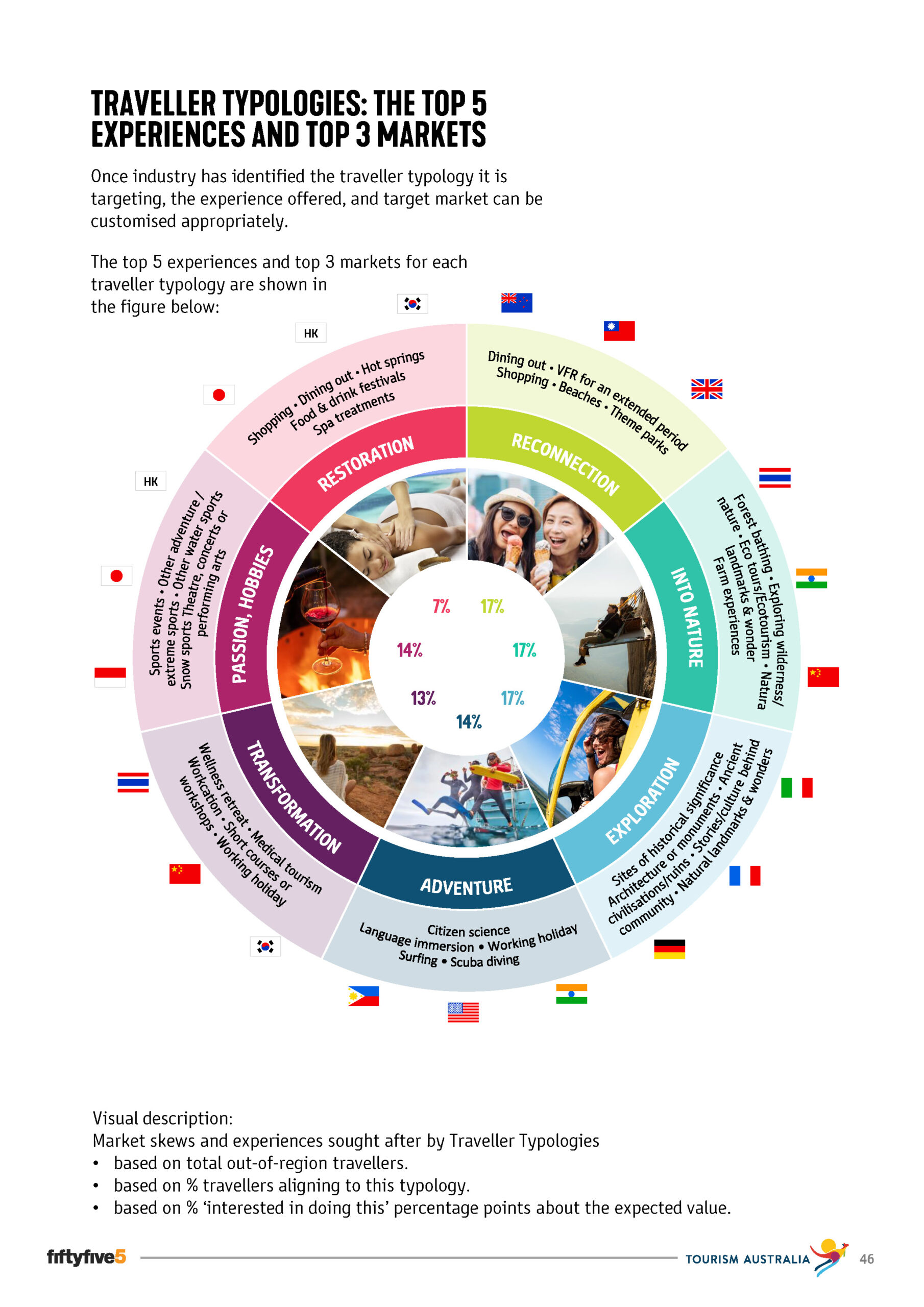Global Wellness Institute research reveals that the wellness market grew to a record $4.9 trillion in 2019 and then fell to $4.4 trillion in the pandemic year of 2020. But with a consumer “values shift” underway, the future of the wellness market is incredibly bright, predicted to grow 10% annually through 2025. (Source: “The Global Wellness Economy: Looking Beyond Covid”, December 2021)
Germans recognized the healing power of nature since the early 19th century, subsequently establishing spas all across the country. In addition, Kneipp therapy – an effective immersion in cold water – became a billion-dollar health and wellness industry. The mindful utilisation of forest resources, construction and maintenance of forest trails and accommodation greatly increased employment leading to a thriving health and medical tourism industry. Visitors now have easy access to natural areas for enjoyment and but also enabling extended time for visitors to recuperate whilst immersing in the clean, oxygen-rich forest air.
Inspired by the German spa culture, Japan recognized the benefits of nature as an antidote to physiological and psychological risks of stress brought about by the tech-boom in the 1980s. The health concept of Shinrin (forest) and Yoku (bath), roughly translated as ‘taking in the forest atmosphere’ or ‘forest bathing’ was born. With Shinrin-yoku the Japanese government established a new, affordable and effective way to combat the high stress levels and lifestyle diseases. The practice also inspired Japanese to reconnect with and protect their local forests. There are now 62 Forest Therapy Bases across all prefectures in Japan welcoming city dwellers to stay in the countryside away from the hustle and bustle of Tokyo, Yokohama and Osaka.
Since then, scientists have identified a raft of physiological and psychological benefits of Forest Therapy, confirming that time in nature relieves stress, lets us feel more refreshed, energetic and creative. Quite simply, Forest Therapy is the ideal preventive and therapeutic solution to improve our quality of life which allows us to live healthier, happier and longer.
Inspired by the Japanese, South Korea now has an impressive network of 38 Forest Healing Centers offering Forest Therapy to people of all age groups, even allowing the country to reap profits of more than USD 2 billion annually. In China, Forest Therapy has emerged as a preventive and alternative therapy to enhance people’s health and wellbeing. The Chinese Government invests the staggering amount of USD 100 billion (!) to establish Forest Therapy Centers across the country. This investment is seen as improving not only the health of Chinese but to provide an opportunity to attract lucrative international health and wellbeing tourism.
This trend will continue, especially in a post-COVID world, with significant demand and growth expected in the global wellbeing industry. Thus, Forest Therapy aligns well with the current movement of prescribing non-pharmacological “green prescriptions”.

(Source: Tourism Australia – Future of Global Tourism Demand, November 2022, p.46)
